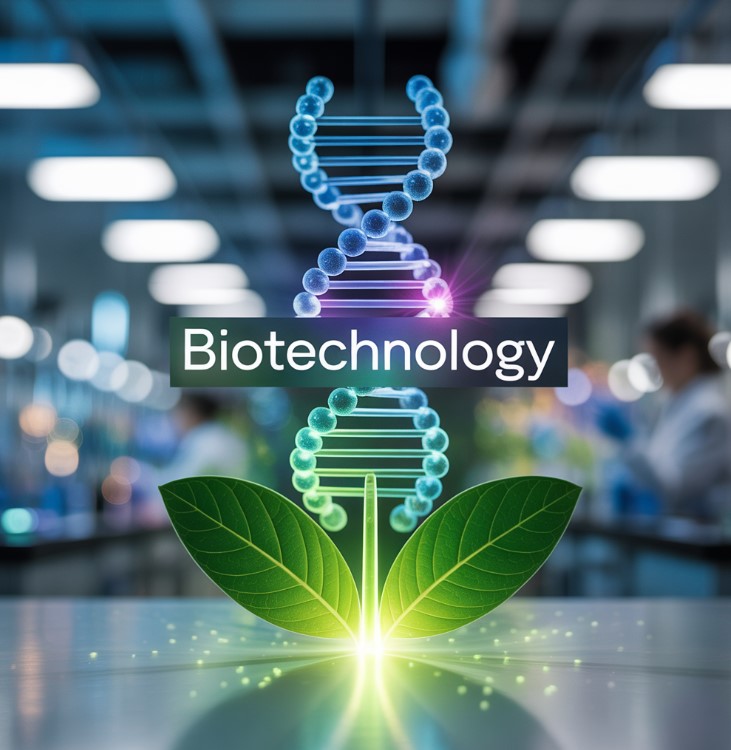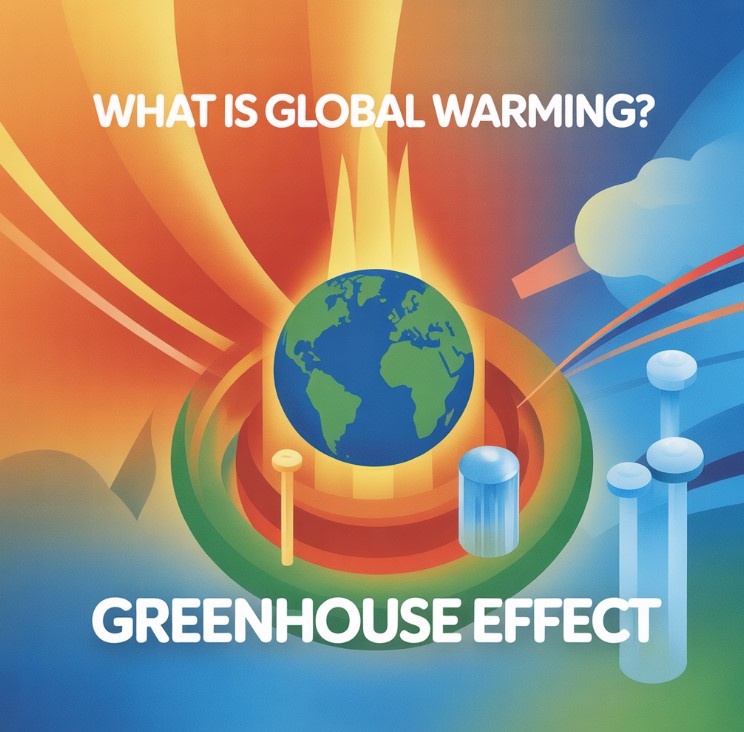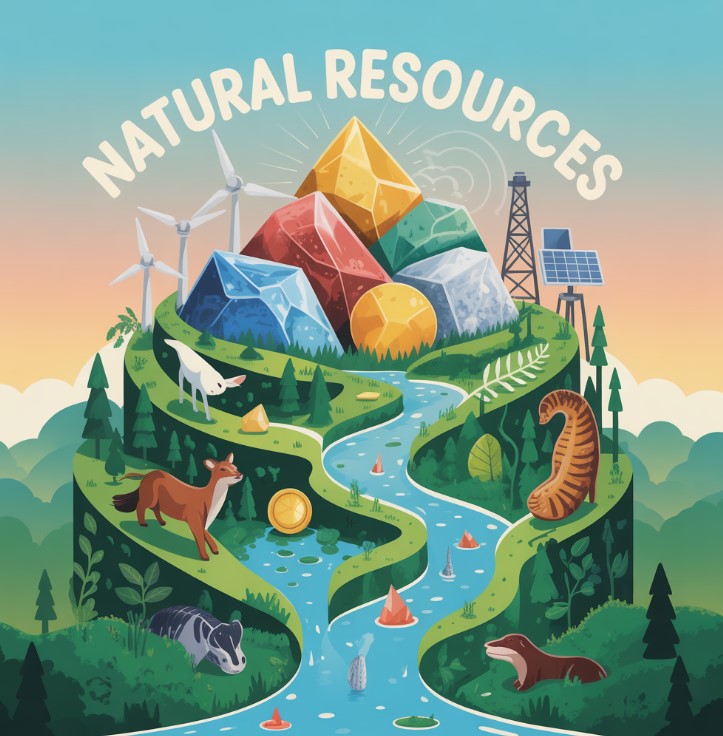Contents
This comprehensive article explores the history, core technologies like genetic engineering, and significant applications of biotechnology in medicine and agriculture, including the development of GMOs.
I find the core concept of this field to be the application of biology to solve complex problems. It uses living organisms and cellular components to create useful products for humanity’s benefit. The impact of this science is now profoundly woven into our daily lives, from the medicines we take to the food we consume on our plates. I will introduce two major pillars of this discipline: its use in modern medicine and its application in global agriculture. This article will explore the fascinating history of this scientific area, detail its core technologies, examine its most significant uses, and discuss its modern-day impact on society.
A Brief History: From Ancient Practices to Modern Labs
Ancient humans unknowingly used biological processes for fermentation to make bread, cheese, and wine. However, I consider the modern definition to have truly begun in the 1970s with new laboratory techniques. The industry’s revolution sparked with the ability to manipulate the genetic code of organisms directly and with purpose. I believe the establishment of Genentech in 1976 as a pioneering commercial company marked the official birth of the modern industry, aiming to translate scientific discoveries into marketable products.
A landmark legal decision was absolutely critical for the sector’s growth and future potential. There was significant legal uncertainty surrounding whether a company could patent a living organism they had modified. The pivotal 1980 Diamond v. Chakrabarty Supreme Court case ruled that a live, human-made microorganism is a patentable subject matter, a decision that unleashed a massive wave of private investment and commercial innovation.
The Core Engine: Genetic Engineering and Recombinant DNA Technology
I will now explain the central technology that drives this entire field forward. Recombinant DNA technology works by isolating a specific gene from one organism and inserting it into the DNA of another, a process often called gene splicing. This fundamental technique allows scientists to create new combinations of genetic material not found in nature.
The primary output of this powerful process is often the production of therapeutic proteins. For example, the human gene for insulin can be inserted into bacteria, which then act as tiny factories to produce vast quantities of pure human insulin. This biological manufacturing process was a monumental leap from sourcing insulin from animals.
Two key related fields have emerged that are essential to these modern advancements.
- Genomics: The comprehensive study of an organism’s entire set of genes, known as its genome.
- Proteomics: The large-scale study of proteins, their structures, and their functions, which helps scientists understand how they drive critical biological pathways and cause disease.
Here is a simplified diagram of how recombinant DNA technology works to produce a therapeutic protein like insulin:
[Step 1: Isolate]
Human Cell -> Extract DNA -> Isolate Insulin Gene
[Step 2: Prepare Vector]
Bacterium -> Extract Plasmid (a small, circular piece of DNA)
[Step 3: Splice]
Cut Plasmid with Restriction Enzyme -> Insert Human Insulin Gene into Plasmid -> Recombinant DNA (Plasmid)
[Step 4: Transformation]
Insert Recombinant Plasmid into a new Host Bacterium
[Step 5: Cultivate]
Grow large quantities of the modified bacteria in a fermenter -> Bacteria multiply and produce human insulin
[Step 6: Purify]
Extract and purify the human insulin for medical use.The Transformative Applications
The use of these biological tools has led to breakthroughs across many different sectors. I will focus on the two areas where its impact has been most profound: healthcare and our food supply. The developments in medicine and agriculture demonstrate the wide-ranging power of this technology.
Revolutionizing Healthcare: Medicine
The first major wave of success in medical applications involved creating therapeutic proteins. I see recombinant human insulin, which became the first such product approved in 1982, and human growth hormone as prime examples of genetically engineered protein medications that transformed patient care. These products provided safer and more reliable alternatives to proteins previously sourced from animals or human cadavers.
Another crucial technique developed was the production of monoclonal antibodies. These are laboratory-produced molecules engineered to serve as substitute antibodies that can restore, enhance, or mimic the immune system’s attack on specific cells, such as cancer cells or viruses. Their incredible specificity makes them essential tools for creating highly targeted treatments and advanced diagnostic tests.
I am also very excited about the future of medical treatments using this technology. The concept of gene therapy holds immense promise as a future direction, aiming to correct underlying genetic deficiencies at their source by replacing, inactivating, or introducing genes directly into a patient’s cells.
Reshaping Our Food Supply: Agriculture
The application of these cellular and molecular tools has also significantly altered agricultural practices. It has led to the creation of crops with desirable traits like pest resistance and improved nutritional content.
What are Genetically Modified Organisms (GMOs)?
I define Genetically Modified Organisms (GMOs) as plants, animals, or microorganisms whose genetic material (DNA) has been altered using genetic engineering techniques. This technology allows for the direct modification of an organism’s genes to introduce beneficial new traits. Early agricultural examples I recall include the use of recombinant bovine somatotropin (BST) to increase milk production in cows and the development of the Flavr Savr tomato, which was the first commercially grown, genetically modified whole food, engineered for a longer shelf life.
The Ongoing Debate: The Controversy of GMO Foods
There has been a persistent and often heated debate surrounding the use of GMOs in our food. On one side, some consumer groups and activists express concerns about potential long-term health effects and environmental impacts, often calling for mandatory labeling or outright bans on these products. On the other side of the argument, a broad scientific consensus from major organizations worldwide states that currently available GM foods are just as safe to eat as their non-GM counterparts. Despite the public controversy in some regions, the global cultivation of genetically modified crops has increased dramatically since their introduction in the mid-1990s.
Here is a table comparing traditional and biotech methods for producing insulin:
| Feature | Traditional Method (Animal Source) | Biotechnology Method (Recombinant DNA) |
|---|---|---|
| Source | Pancreas from pigs or cows | Engineered bacteria or yeast |
| Purity | Can contain animal impurities | High purity, identical to human insulin |
| Allergic Reactions | Higher potential for reactions | Very low potential for reactions |
| Supply | Limited by the number of animals | Scalable and virtually unlimited supply |
| Ethical Concerns | Involves animal slaughter | Does not require animals |
Frequently Asked Questions (FAQ)
Q1: Is biotechnology a new field?
A: While humans have used biological processes like fermentation for millennia, the modern field based on genetic engineering began in the 1970s, making it a relatively new scientific industry.
Q2: Are gene therapy and genetic engineering the same thing?
A: No, they are related but different. Genetic engineering is the broad technology of altering an organism’s DNA, while gene therapy is a specific medical application of that technology used to treat human diseases by modifying a patient’s genes.
Q3: Why are GMOs controversial?
A: The controversy around GMOs stems from a mix of consumer concerns about safety, environmental impact, and corporate control over the food supply, even though major scientific bodies have found them to be safe.
The Industry Today: Growth and Future Outlook
The commercial sector has experienced truly explosive growth, especially since the late 1990s. The global biotechnology market size was valued at an incredible USD 752.88 billion in 2020, and it continues to expand rapidly as new discoveries are made. I believe this growth reflects the immense value and potential of these technologies across various industries.
Future trends indicate that the field will continue to push the boundaries of science. I am watching emerging areas like bioinformatics, which uses computation to analyze biological data, nanotechnology for creating materials at the molecular scale, and regenerative medicine, which aims to repair or replace damaged tissues and organs, as the next great frontiers. These new disciplines promise to build upon existing foundations to create even more powerful solutions.
Conclusion
I have recapped the incredible journey of this discipline, from the foundational concept of recombinant DNA technology to its revolutionary applications. We saw its power in medicine through the creation of life-saving therapeutic proteins and in agriculture with the development of modified crops. The creation of these products has fundamentally changed human health and our food systems.
In my final thought, this powerful field remains one of the most dynamic and important areas of scientific endeavor. It is continuously evolving to help solve some of humanity’s most pressing challenges, from curing chronic diseases to ensuring a sustainable and secure food supply for a growing global population.





